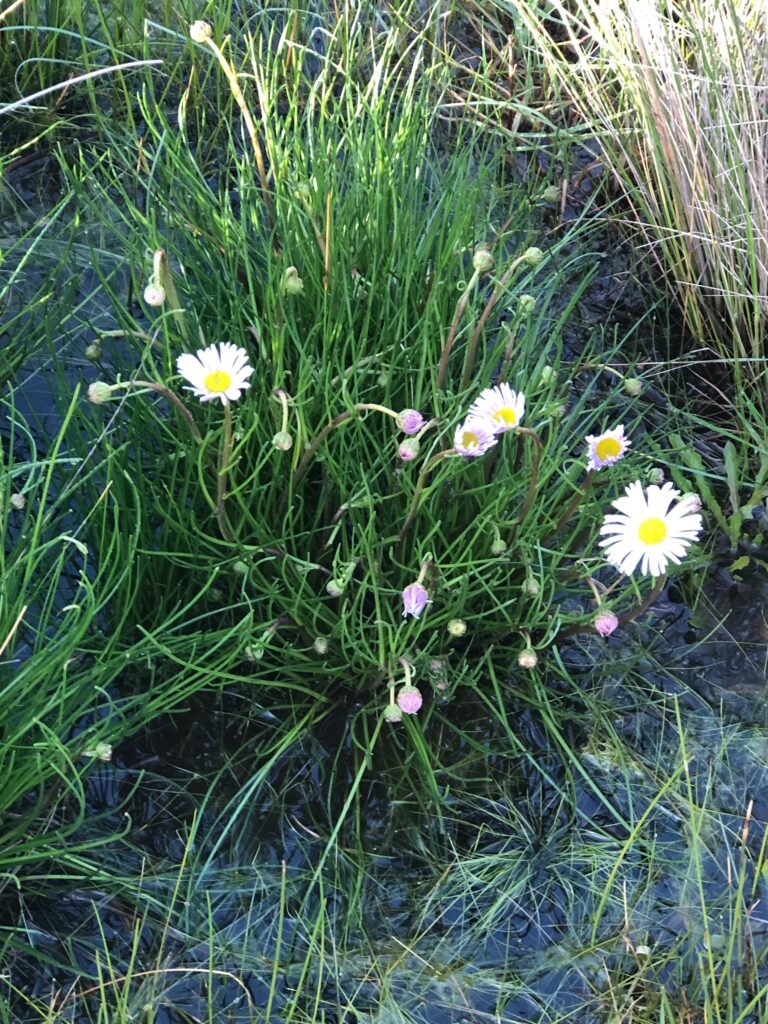A surprising field photo gives a glimpse into vegetation recovery at Scale Swamp
Sam Greiner sent me a photo last month while she was out at Scale Swamp to do some bird surveys. Scale Swamp, in western Victoria, is one of the first wetland restoration projects we tackled under the Australian Government funded Biodiversity Fund Project – Wetland Restoration on Private Land project – back in 2014. The initial response of the wetland following works was fairly dramatic and positive, which you can read more about here.
Complete ecological recovery of any wetland (to something more closely resembling its likely original reference state) following rehabilitation works can be a long process, with different components of the system responding at different rates – and this is where the story of the photo Sam sent me is of great interest.
It is of a swamp daisy (Allittia cardiocarpa), a species that we haven’t recorded at this site before and something I associate with more intact or higher quality wetlands – so to see it make a spontaneous appearance like this was a pleasant surprise.
In 2012, David Moreno-Mateos and others published an article on structural and functional loss in restored wetlands. The overall synthesis from their review of 124 sites across the globe indicated that wetlands were quite slow to recover and that we shouldn’t use recovery potential to justify or tolerate ongoing destruction and loss, which makes good logical sense. However, closer reading of this research also revealed some insights into the recovery processes of different elements within restored wetlands, and these have been at the front of my mind when observing how the wetlands that we work on are recovering.
This timeline of recovery of different wetland elements can be summarised as follows:
•physical features (topography, soil permeability, surface and ground water flows) recovered immediately.
•the abundance and composition of wetland vertebrate species recovered to reference levels usually within 5 years.
•plant assemblages took on average 30 years to converge on reference states.
The recovery of vertebrate species at Scale Swamp is mostly in the form of birds (50 species recorded so far), including the arrival of a brolga flock and Latham’s snipe four years after re-inundation.
We haven’t recorded any fish, which being a landlocked system is to be expected and, despite recording the “usual suspect” frogs, we are yet to record growling grass frogs finding their way back to this site. In terms of plants, we have recorded several aquatic herbs, grasses and sedges, most of which are common, but the less common prickfoot (Eryngium ovium) has also been observed. As time moves on we will see this diversity increase and some of the less common and even rarer wetland plants recolonising. Swamp daisies fall into this category. I look forward to getting back out to Scale Swamp this spring to see just how widespread swamp daisies are and also what else has turned up!

